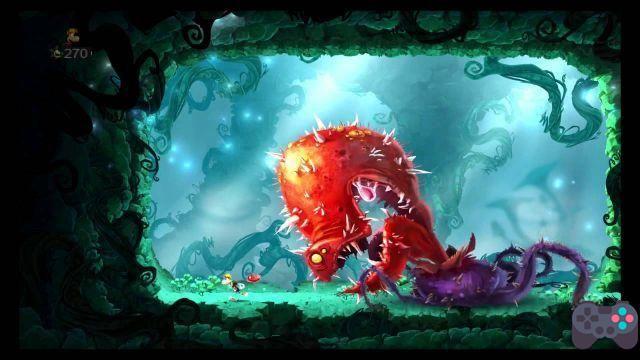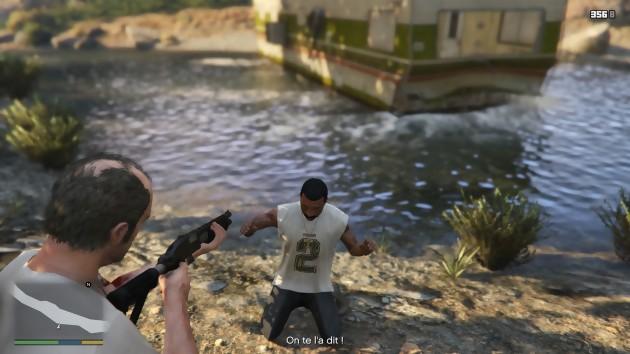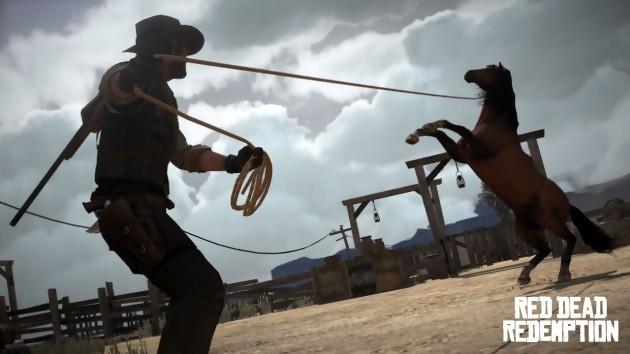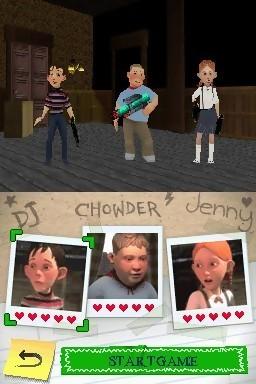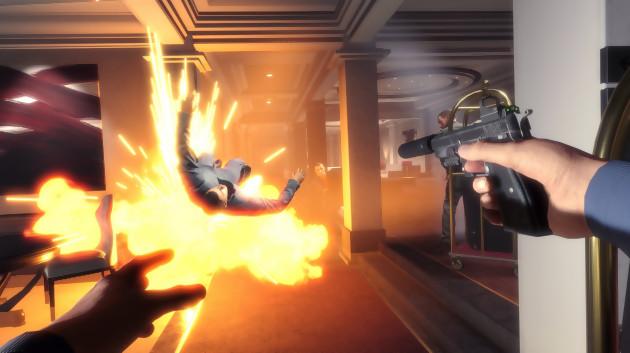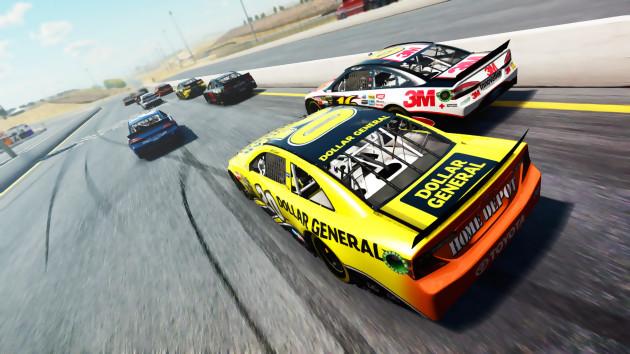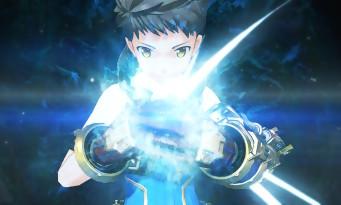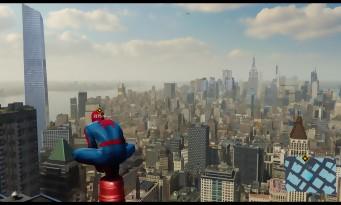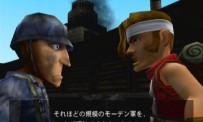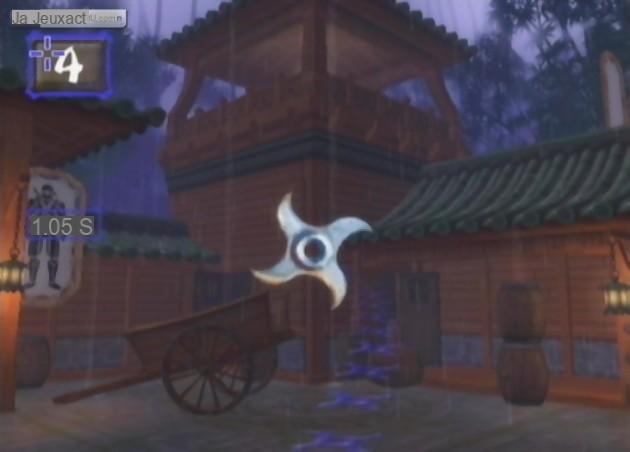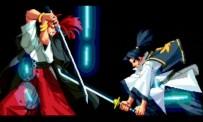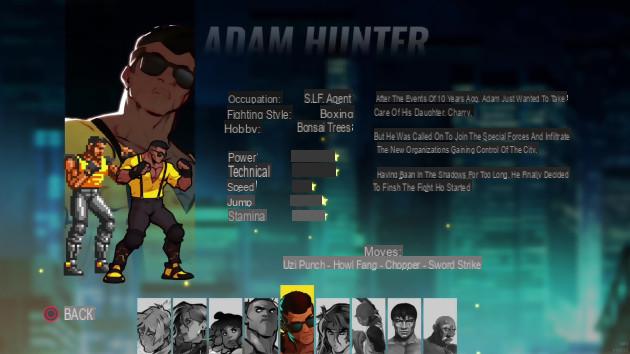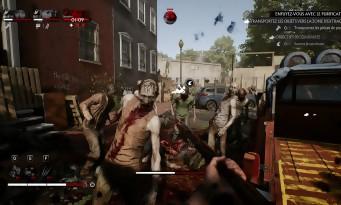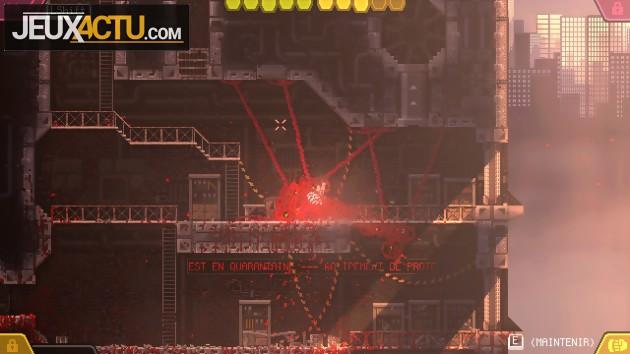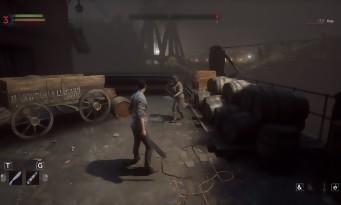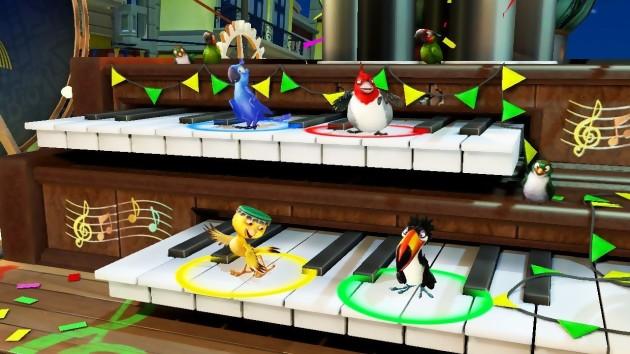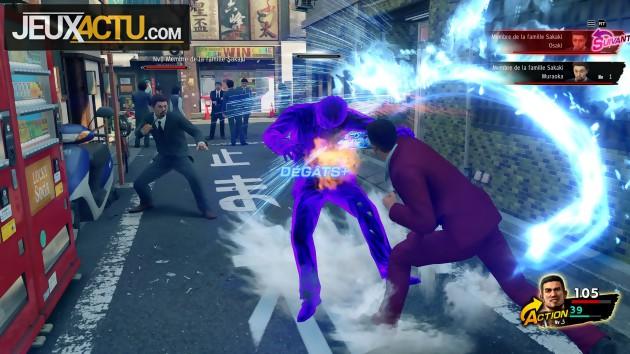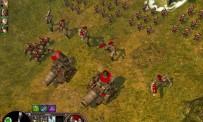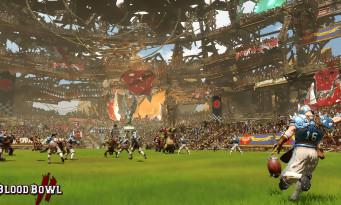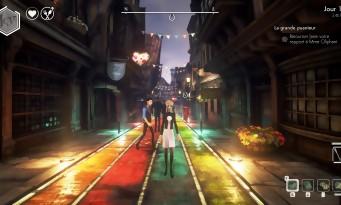 We therefore discover the final version of We Happy Few in August 2018, two years after the first fiasco between backers, and unsurprisingly, the concept has greatly evolved. Exit the random generation of levels, and goodbye also the survival game, the first concept of the game. From now on, the title is presented as a narrative FPS mixing RPG and adventure elements with a zest of action. On paper, the recipe is excellent, especially since the environment and the artistic direction are still devilishly attractive. The player will evolve in England at the end of the 40s which is recovering very difficultly from its defeat against Nazi Germany. To avoid an occupation, and frightened by the German tanks, the inhabitants of Wellington Wells, (a city located on an island and separated from the mainland by a bridge) were forced into many atrocities, including the abandonment of all the offspring of the country in the hands of the victors. To forget these horrors, and so as not to think about the end of their island condemned de facto to death (by lack of population renewal), inhabitants and authorities have chosen to veil their faces with the help of a powerful antidepressant called JOY (Joy). To keep society going, all negativity is banished, and people are even reduced to wearing disturbing masks (very inspired by Stanley Kubrick's A Clockwork Orange) displaying a big smile. Between the obligatory taking of Joy in high doses, and a very strict code of conduct (prohibition of running, jumping or complaining), society is therefore collectively sinking into a deep addiction, and subservience to local authorities.
We therefore discover the final version of We Happy Few in August 2018, two years after the first fiasco between backers, and unsurprisingly, the concept has greatly evolved. Exit the random generation of levels, and goodbye also the survival game, the first concept of the game. From now on, the title is presented as a narrative FPS mixing RPG and adventure elements with a zest of action. On paper, the recipe is excellent, especially since the environment and the artistic direction are still devilishly attractive. The player will evolve in England at the end of the 40s which is recovering very difficultly from its defeat against Nazi Germany. To avoid an occupation, and frightened by the German tanks, the inhabitants of Wellington Wells, (a city located on an island and separated from the mainland by a bridge) were forced into many atrocities, including the abandonment of all the offspring of the country in the hands of the victors. To forget these horrors, and so as not to think about the end of their island condemned de facto to death (by lack of population renewal), inhabitants and authorities have chosen to veil their faces with the help of a powerful antidepressant called JOY (Joy). To keep society going, all negativity is banished, and people are even reduced to wearing disturbing masks (very inspired by Stanley Kubrick's A Clockwork Orange) displaying a big smile. Between the obligatory taking of Joy in high doses, and a very strict code of conduct (prohibition of running, jumping or complaining), society is therefore collectively sinking into a deep addiction, and subservience to local authorities.
THAT PLANE FOR ME
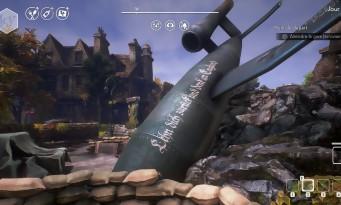 In this colorful maelstrom, the player initially embodies Arthur Hastings, a journalist whose role is mainly to censor or validate articles that appear in the local daily. Unfortunately, the latter comes across a phony article that tells an absurd story about what would have happened to Percival Hastings, his own brother. At this moment, a flash appears to our hero, and an image of his separation from his brother comes to mind. In this furtive moment of lucidity, our man decides to throw away his Joy pill, and go in search of his brother. Through many adventures, Arthur will therefore have to go get his memories, and find out what happened to his brother. As the story progresses, the memories will come back via more and more frequent visions (black & white cutscenes), and we will thus be able to discover many things about Arthur and Wellington Wells. If we can only salute the narration, the same is not true of the gameplay, the latter being clearly recovered directly from the time when We Happy Few was a survival game. The first detail that is wrong is in the quests, the latter very often making us make countless round trips in Wellington Wells. Unfortunately, if the colors are enchanting at first, we quickly reach saturation, especially since the level design is not really inspired. The streets are all alike, and the interiors of the houses are made with a photocopier. It is also the same for the NPCs that populate the arteries, and of which there have been approximately 8 variations in all and for all.
In this colorful maelstrom, the player initially embodies Arthur Hastings, a journalist whose role is mainly to censor or validate articles that appear in the local daily. Unfortunately, the latter comes across a phony article that tells an absurd story about what would have happened to Percival Hastings, his own brother. At this moment, a flash appears to our hero, and an image of his separation from his brother comes to mind. In this furtive moment of lucidity, our man decides to throw away his Joy pill, and go in search of his brother. Through many adventures, Arthur will therefore have to go get his memories, and find out what happened to his brother. As the story progresses, the memories will come back via more and more frequent visions (black & white cutscenes), and we will thus be able to discover many things about Arthur and Wellington Wells. If we can only salute the narration, the same is not true of the gameplay, the latter being clearly recovered directly from the time when We Happy Few was a survival game. The first detail that is wrong is in the quests, the latter very often making us make countless round trips in Wellington Wells. Unfortunately, if the colors are enchanting at first, we quickly reach saturation, especially since the level design is not really inspired. The streets are all alike, and the interiors of the houses are made with a photocopier. It is also the same for the NPCs that populate the arteries, and of which there have been approximately 8 variations in all and for all.
The obligation to hide is also one of the big black spots of the game, since we will spend an incalculable time stashed in garbage cans, car trunks, or in thickets, and this, until the cops and other angry onlookers drop the bunch.
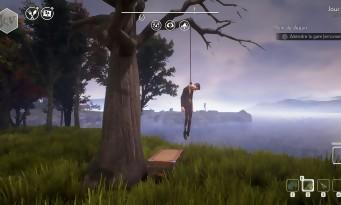 Moreover, travel is all the more complicated as it is forbidden to run or jump during the day, under penalty of seeing popular condemnation fall on us. At night, things are even worse, as a curfew is in place, and anyone who ventures outside will be relentlessly executed. Of course, by spending time there, we can find some fast travel points that use the old metro network, but overall, it will wear down your character's soles. Ah yes ! We forgot to tell you. Relics from the initial survival system cause most weapons to wear out, while your character will take stamina penalties if they haven't slept, eaten or drank enough. Inevitably, eating with rotten vegetables will twist our hero's guts, while the city's water network is filled with Joy, in order to be sure that the fellow citizens are permanently high. To be able to hydrate in peace, you will have to go through crafting and make a filter. You will also have to spend a good time collecting all kinds of materials to be able to make your own weapons, potions and others. All medical equipment is practically impossible to find in the game, while it is crucial to heal yourself after each fight. Clashes are necessarily very frequent in the game, unless you want to further lengthen transport times by hiding each time a police officer points his nose. The obligation to hide is also one of the big black spots of the game, since we will spend an incalculable time stashed in garbage cans, car trunks, or in thickets, and this, until the cops and other angry onlookers drop the bunch. If the wait is long, we can at least have a good laugh by saying hello to our pursuers, since they will have forgotten our existence as soon as the allotted time is up.
Moreover, travel is all the more complicated as it is forbidden to run or jump during the day, under penalty of seeing popular condemnation fall on us. At night, things are even worse, as a curfew is in place, and anyone who ventures outside will be relentlessly executed. Of course, by spending time there, we can find some fast travel points that use the old metro network, but overall, it will wear down your character's soles. Ah yes ! We forgot to tell you. Relics from the initial survival system cause most weapons to wear out, while your character will take stamina penalties if they haven't slept, eaten or drank enough. Inevitably, eating with rotten vegetables will twist our hero's guts, while the city's water network is filled with Joy, in order to be sure that the fellow citizens are permanently high. To be able to hydrate in peace, you will have to go through crafting and make a filter. You will also have to spend a good time collecting all kinds of materials to be able to make your own weapons, potions and others. All medical equipment is practically impossible to find in the game, while it is crucial to heal yourself after each fight. Clashes are necessarily very frequent in the game, unless you want to further lengthen transport times by hiding each time a police officer points his nose. The obligation to hide is also one of the big black spots of the game, since we will spend an incalculable time stashed in garbage cans, car trunks, or in thickets, and this, until the cops and other angry onlookers drop the bunch. If the wait is long, we can at least have a good laugh by saying hello to our pursuers, since they will have forgotten our existence as soon as the allotted time is up.
A BIG BAD TRIP?
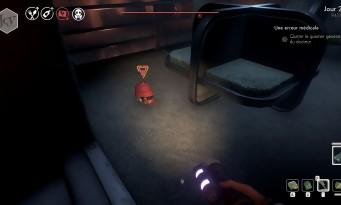 Moreover, the ridiculousness of hide-and-seek games reaches its climax when we find ourselves squatting in a patch of daffodils, and surrounded by a hostile crowd that bumps into us without even seeing us. This dysfunction is only the tip of the iceberg. We Happy Few is indeed completely on the technical side. Despite the Unreal Engine 4 engine, the title is rather ugly visually, and it is literally full of bugs. Countless collision bugs (and sometimes quite comical), trigger problems, disastrous AI pathfinding (which is easily sown in open country), invisible walls and small pebbles that prevent the player from passing without jumping, you have understood it: we could continue this inventory à la Prévert for lines and lines. This pick-up technique is all the more unfortunate as the game has arguments in its favour. The narration is well made, and after completing the adventures of Arthus Higgins, we discover that we can play two additional chapters with two other characters who have also given up the joys of Joy. In total, We Happy few allows about 40 hours of play, although we don't necessarily want to go all the way because of the game's many problems. It should be noted that in addition, a sandbox mode will be offered , although it is not known when it will be available.
Moreover, the ridiculousness of hide-and-seek games reaches its climax when we find ourselves squatting in a patch of daffodils, and surrounded by a hostile crowd that bumps into us without even seeing us. This dysfunction is only the tip of the iceberg. We Happy Few is indeed completely on the technical side. Despite the Unreal Engine 4 engine, the title is rather ugly visually, and it is literally full of bugs. Countless collision bugs (and sometimes quite comical), trigger problems, disastrous AI pathfinding (which is easily sown in open country), invisible walls and small pebbles that prevent the player from passing without jumping, you have understood it: we could continue this inventory à la Prévert for lines and lines. This pick-up technique is all the more unfortunate as the game has arguments in its favour. The narration is well made, and after completing the adventures of Arthus Higgins, we discover that we can play two additional chapters with two other characters who have also given up the joys of Joy. In total, We Happy few allows about 40 hours of play, although we don't necessarily want to go all the way because of the game's many problems. It should be noted that in addition, a sandbox mode will be offered , although it is not known when it will be available.




